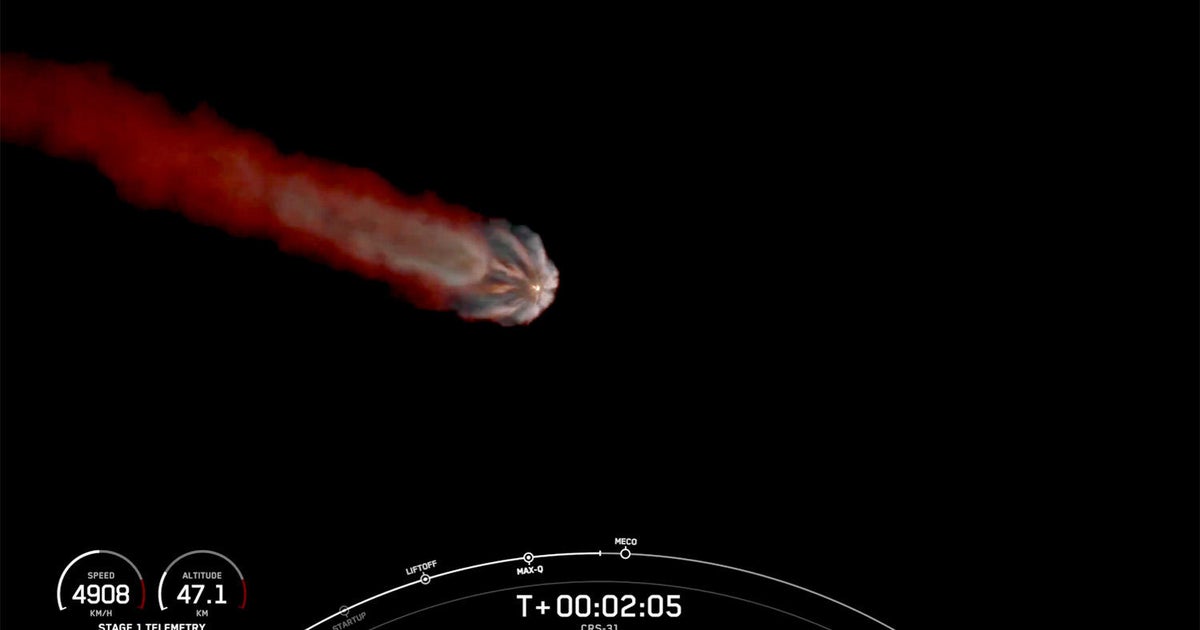CBS News
Built-to-rent communities a growing U.S. trend amid sky-high housing costs

As housing costs skyrocket and the demand for affordable homes surges, builders across the U.S. are constructing entire blocks of single-family homes specifically designed for renters. These so-called built-to-rent communities can offer another option for those who want a home but cannot afford to buy one.
Texas resident Richard Belote says his rented home 90 minutes from Houston is a “good stepping stone, because interest rates are “just too high to manage.” Despite saving diligently to buy a home, he and his fiancee feel priced out of their house hunt.
“Just really kind of crossing our fingers that those rates go down,” he said.
Belote is far from alone.
A July CNN poll found 86% of renters say they can’t afford to buy a home and 54% say they believe it’s unlikely they’ll ever be able to. However, another poll found 81% of renters want to own a residence in the future.
“House prices have gone up by more than 40% in just four years,” said CBS News business analyst Jill Schlesinger. “There are a lot of people out there who really, really want to be in homes, and they just can’t afford to get there,” Schlesinger said.
Built-to-rent communities began in Phoenix during the Great Recession to meet that demand. They are higher density and smaller cottage-sized homes — a literal cottage industry now spreading in cities across the Sunbelt, including Phoenix, Atlanta and Dallas.
Brent Long leads the build-to-rent expansion for Christopher Todd Communities in Arizona. He says the renters range in age from Gen Z to Baby Boomers.
“It’s really renters by choice and renters by need,” Long said.
When asked if the concept goes against a more traditional view of buying a home to achieve the American Dream, Long said, “I don’t think it takes it away. It solves some issues that are out there in terms of affordability, availability.”
Cassie Wilson rents by choice in Phoenix, Arizona. She says the “perfect” arrangement allows her to enjoy many amenities without the homeownership responsibilities.
“I can live here in a house that is fully up kept by someone else. I would like to buy a house out here. But on the flip side, I still want to travel,” Wilson said.
Though a growing industry, these built-to-rent communities made up only 7.9% of new residential constructions last year, according to Arbor Realty Trust.
Arizona housing advocates warn that the properties are not enough to push prices down, but welcome anything that helps to address the housing shortage.
Back in Texas, Belote said he wakes up every morning and enjoys his backyard with the dogs and his cup of coffee. It’s a home-sweet-home as he waits for a break in the housing market.
CBS News
11/4: The Daily Report – CBS News

Watch CBS News
Be the first to know
Get browser notifications for breaking news, live events, and exclusive reporting.
CBS News
11/4: America Decides – CBS News

Watch CBS News
Be the first to know
Get browser notifications for breaking news, live events, and exclusive reporting.
CBS News
Cargo ship launched to space station with supplies, science gear and holiday treats for crew

SpaceX launched an unpiloted Dragon cargo ship Monday evening, an election eve flight to deliver three tons of crew supplies, science gear and other equipment to the International Space Station, including an unusual wooden satellite, a solar wind monitor and holiday fare for the lab’s crew.
The Dragon’s Falcon 9 rocket blasted off from historic launch pad 39A at the Kennedy Space Center at 9:29 p.m. EST, lighting up the night sky for miles around as it climbed away atop 1.7 million pounds of thrust.
NASA/SpaceX
After boosting the rocket out of the dense lower atmosphere, the first stage, making its fifth flight, peeled away, reversed course and headed back to an on-target landing at the Cape Canaveral Space Force Station while the second stage continued the climb to space.
The landing marked SpaceX’s 57th successful booster recovery at the Florida Space Force station and its 363rd overall, including California flights and droneship landings.
Spaceflight Now
Just under 10 minutes after liftoff, the vacuum-optimized engine powering the Falcon 9’s second stage shut down and one minute later, the Dragon was released to fly on its own. If all goes well, it will catch up with the space station Tuesday morning and move in for docking at the lab’s forward port at 10:15 a.m.
One of the first items on the agenda is a test Friday to determine the Cargo Dragon’s ability to boost the space station’s orbit slightly using its aft-facing thrusters. The ISS is routinely re-boosted by Russian Progress freighters and Northrop Grumman Cygnus cargo ships, but Friday’s test will be a first for SpaceX.
The California rocket builder is under contract to NASA to build a powerful space tug of sorts that can be used to safely drive the ISS back into the atmosphere when the lab complex is retired in the 2030 timeframe. The vehicle is needed to make sure the station breaks up over a stretch of ocean well away from populated areas and shipping lanes.
During the test Friday, the Cargo Dragon’s aft thrusters will fire for about 12 minutes.
“The data that we’re going to collect from this reboost and attitude control demonstration will be very helpful, informing SpaceX analyses on how the system performs,” said Jared Metter, SpaceX director of flight reliability. “This data is going to lead to future capabilities, namely the US de-orbit vehicle.”
Reboost aside, the Cargo Dragon is loaded with slightly more than 6,000 pounds of equipment and supplies, including 2,022 pounds of science gear, 2,119 pounds of crew clothing, food and other supplies, 377 pounds of spacewalk equipment, 525 pounds of space station hardware and 44 pounds of computer equipment.
One of the more unusual payloads: Lignosat, a small wooden satellite using a framework of magnolia panels built by researchers at Kyoto University in Japan and the Tokyo-based logging company Sumitomo.
STR/JIJI PRESS / AFP via Getty Images
“While some of you might think that wood in space seems a little counterintuitive, researchers hope that this investigation demonstrates that a wooden satellite can be more sustainable and less polluting for the environment than conventional satellites,” said Meghan Everett, the ISS deputy project scientist.
“The main objective here is to determine whether wood can be used in space, and to do this, researchers will measure the temperature and strain of the wooden structure and see how it might change in the vacuum environment of space with atomic oxygen and radiation conditions as well.”
As with all station-bound Dragon cargo ships, the crew supplies include fresh food and special treats for holiday meals.
Bill Spetch, ISS operations and integration manager, said the “food kit” includes “citrus, apples, sweet onions, blueberries, radishes, etc,” along with lobster, crab and quail for holiday meals. A variety of cheeses is on board as well as fresh coffee and personal items requested by each crew member.
Mounted in the Dragon’s unpressurized trunk section is the Coronal Diagnostic Experiment, or CODEX, an instrument that will be mounted outside the space station to learn more about how charged particles in the solar wind are heated to millions of degrees and accelerated to enormous velocities, affecting Earth’s space environment and the rest of the solar system.
Inside the station, the astronauts will have a variety of new experiments and instruments to operate and monitor, including one called ARTEMOSS that will examine how Antarctic moss tolerates the space radiation and microgravity environment to learn more about how plants might be used in future life support systems.
The European Space Agency is sending up a space exposure experiment to learn more about how high-tech materials respond to prolonged exposure to the weightless environment and another experiment to study how organic samples degrade when exposed to unfiltered ultraviolet light from the sun.
And in an experiment that could be particularly useful to future astronauts, a small device known as Nanolab Astrobeat, provided by the Malta College of Arts, Science and Technology, will test cold welding technology that could prove useful for repairing leaks or other damage from inside a spacecraft.
The Cargo Dragon is expected to remain docked at the space station for about a month before it returns to Earth with station components needing refurbishment, trash and other no-longer-needed items.












